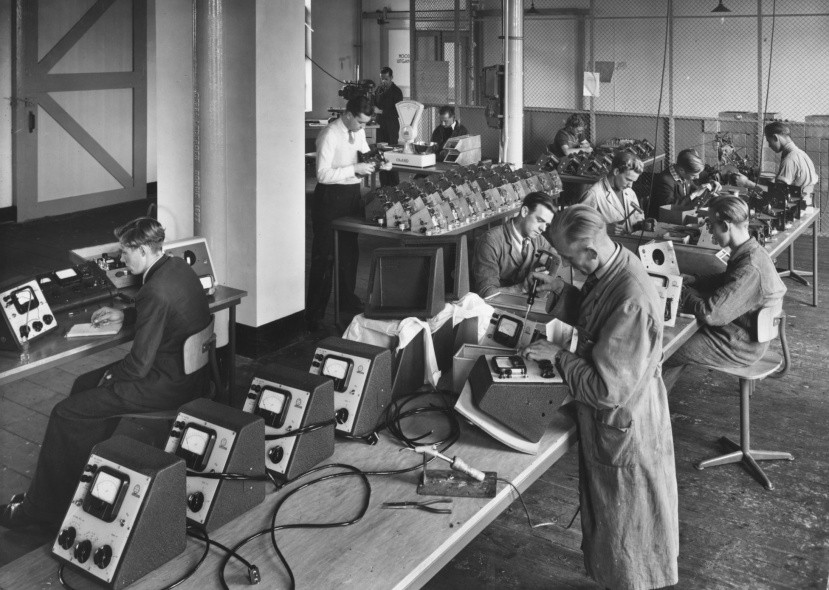Biotech for Chemistry, Flexible Production and Chemical & Pharma Logistics are the focal topics at the world forum for the process industry Achema 2018 in Frankfurt (Germany).
Module, modular, modular automation
These trends in the chemical and pharmaceutical industries are supported, among other things by process automation solutions. The integration of biotech and chemical processes is resulting in new process automation requirements and concepts. Chemical and pharmaceutical companies, too, are forced to face up to the reality of increasingly customized products with ever shorter lifecycles. Tomorrow’s plants will not simply be planned as a series of modules; they will have to be optimally prepared for more flexible, modular production with the help of modular automation. It is not sufficient to consider this change merely from the perspective of individual production facilities; instead, an “out of the box” view is called for, in other words based on the exchange of data across the entire value chain and the entire network.
The same but different
Automation technology is what makes it possible to implement economically attractive production and business workflows. Yet in spite of all the ongoing developments, the fundamental requirements that plant owners demand still remain: production must be safe, reliable and efficient. The operating personnel must understand and master the processes under their supervision, and be able to control them to maximum effect.
I’d like to begin by defining the objective: what are the key characteristics of optimized process automation?
As I see it, there are three main aspects:
- Best possible integration of all technical components with all stakeholders and participating systems as a precondition of flexible, optimized and predictive process management
- Beneficial dialog between people, user friendly interaction between humans and machines, and efficient machine communication
- All of this with the maximum possible safety and reliability
Global landscapes
A look at today’s automation landscape shows very clearly just what a complex task this is. Information and communication technologies are developing at such a rapid pace that the landscape no longer consists simply of individual plants but is comprised of local and regional network structures – if not the globally distributed assets of multinational corporations. Automation controls complex value chains and interacts with multifaceted business processes. The mission is to design all of these aspects as efficiently as possible.
[ot-caption title=”Automation landscape” url=”https://www.yokogawa.com/eu/blog/chemical-pharma/app/uploads/2017/05/Capture.jpg”]
Listen to the heartbeat
Automation still begins at each individual plant, close to the production process – controlling and regulating, with sensors and field devices as well as control and safety instrumented systems. For several decades now, this has been one of our core competencies. And it’s here – as well as on the field level – that the automation heart of operational technology, often referred to simply as OT, beats. Everything that is essential to operate a plant safely and reliably belongs to this mission critical area. Reliability is the top priority, and with it availability and integrity. Interactions with the world outside must take place without interfering with those functions that are critical for the process. We will still need a central automation instance in the future regardless of the specific plant topology.
Flow of information
Of course, the OT systems are in constant contact with the MES and ERP systems, which are responsible for production and corporate control. MES functionalities and workflows on the process level are regarded as critical – today and even more so in the future. However, simply keeping a plant “up and running” is no longer enough to comply with market requirements and be commercially successful. Sustainably optimized availability, flexibility, efficiency in terms of productivity and quality, and easy operability are important.
- Predictive process management,
- Predictive and condition based plant asset management,
- Intelligent alarm management, and
- Mobile data access
represent the key here.
There are signs that production control tasks – previously the domain of the MES – will be distributed differently in the future. Particularly at the interfaces between the control system and the MES, or between the MES and ERP levels, workflow management tools play a significant role in optimizing business and production operations. This applies to the planning, preparation, and execution of maintenance and repair work as well as to production and campaign planning or traceable batch documentation etc. – which is essential, for instance, in regulated industries like pharmaceutical manufacturing. Although they use information from OT systems for this purpose, they tend to need additional data. Yokogawa has long been equally at home on this optimization level of information technology.
Data integration
The ability not only to network components together in terms of the IT but to simultaneously integrate the related processes – for instance in unified workflows or through lifecycle planning – is crucial for success. I’m not just referring to the lifecycle of a single plant here; I mean customer product lifecycles across all manufacturing facilities, too.
To a growing extent, the data on which these solutions are based is obtained in real time from different plants at different locations and subsequently combined and analyzed. KPIs, instructions, and even interventions in the process in the sense of closed-loop control are automatically derived from this data.
Whether the integration of locations, possibly in an enterprise-wide network, begins with the outer IT level or from an intermediate level of local, cyber-physical systems can only be determined on a case-to-case basis. However, enterprise-wide integration has benefits even in local networks of data and plants.
Between two worlds
In the foreseeable future, there will be umpteen intermediate states between classic OT automation and a fully digitized world. The change will be an ongoing one. Yokogawa takes a pragmatic approach here: with solutions to support users as efficiently as possible at every evolutionary stage.
I’d like to take advantage of this blog to discuss the various steps leading up to Achema 2018 with you. What other challenges can you identify for the future? Have you any questions regarding the automation landscape? Feel free to write a comment.
We’ll be presenting the answers to you in 2018 at the Frankfurt exhibition. I promise you won’t be disappointed.




